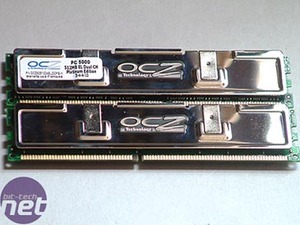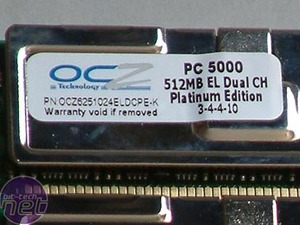
The modules are rated at an astonishing PC5000, which is roughly 313MHz (626MHz DDR) in laymans terms. OCZ guarantee the memory to run at 3.0-4-4-10 at those speeds, and we suspect that you will be able to achieve more than what you pay for if OCZ's reputation is anything to go by. While the timings don't seem blisteringly quick, when you consider that they're rated at 313MHz, the timings are pretty respectable. Bear in mind that both Gigabyte's and ASUS' SLI motherboards were stable at front side bus speeds lower than what these modules are rated at, even after removing the memory limitation by running a divider.
Seeing as the Athlon 64's memory controller is located on-die, newer core revisions are likely to have more bulletproof memory controllers that are likely to overclock slightly futher. Look out for the Venice and San Diego cores, both are based on AMD's 90nm SOI process, and have the newer memory controller that is capable of supporting 4 memory modules at DDR400. It should also be more versatile when it comes to overclocking, too. We'll find how well our Clawhammer CPU holds up to the speeds that both the motherboard and memory are capable of shortly, but before we do, lets have a look at the modules.



The fact that OCZ guarantee that these memory modules will run at 626MHz is a testament to the quality of yield that both TCCD and TCC5 is capable of. The same chips are also used on OCZ's PC4800 EL memory modules, and these are exactly the same modules, with the exception of the DRAMs being binned at a higher speed grade.
Aesthetically, the modules don the familiar OCZ Platinum heatspreader that is present on all of the company's Platinum-series modules. However, the heatspreader has changed a little since the last time we reviewed a pair of OCZ modules - the OCZ logo is a little more prominent now. They're typical copper heatspreaders with a chromed finish, and work well in practice - the modules do get quite hot when running at over 300MHz.

MSI MPG Velox 100R Chassis Review
October 14 2021 | 15:04








Want to comment? Please log in.